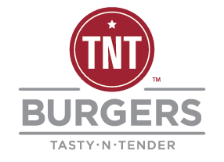
Engineering Your Communication to Drive Sales, Win Loyalty and Boost Profitability
Can you guess what the most important internal marketing and sales tool is for your restaurant?
It’s your menu.
It’s the first thing you present your guests when seated, and the first thing they ask for to pass the time when waiting for a table. Nearly 100 percent of your guests will read your menu. This fact underscores the importance of crafting a menu that works hard for you.
Sure, your chefs may grill up the best burger in town or prepare a buttery lobster ravioli that makes taste buds dance, but if your menu looks unprofessional or outdated, let’s face it, these amazing dishes won’t be served. A properly designed menu will ensure these dishes make it to the table—both satisfying guests and helping inspire return visits.
Your menu needs to be more than a list of food with prices; it needs to educate and entertain your guests.
Your menu has a direct influence on what your customers order, and in turn, an immediate impact on your sales revenue. Menu engineering techniques and menu design best practices will help you craft a compelling menu that drives sales, wins loyalty and boosts profitability.
Menu Engineering
What is menu engineering?
The concept of menu engineering was developed in the early 1980s by two professors at the Michigan State School of Hospitality. Rooted in scientific analysis and practical knowledge, its goal is to subconsciously influence customers’ menu selections in order to maximize profits. In short, the question menu engineering helps you answer is “How can I get my guests to buy the items I want them to buy?” While the intelligence it generates was originally intended for traditional printed menus, its lessons can be applied to table tents, specialty menus (e.g. drink, dessert, holiday and children’s menus), menu boards and even digital menus.
The menu engineering process
Menu engineering can be a hefty undertaking, but its benefits far outweigh any cost or time investments. In fact, most restaurants improve profits by 2 to 10 percent from a reengineered menu, according to Restaurants USA. For an operation that earns $1 million annually, a reengineered menu could mean an extra $100,000—each year! Some organizations even reengineer their menus every year to squeeze out additional profits.
Evaluating menu profitability
The process begins with an evaluation of your menu’s profitability. To do this, you must calculate each menu item’s contribution margin, or the menu price less the total cost of ingredients. Accuracy is key here, so make sure to calculate the food cost down to the penny. Next, divide the sum of all contribution margins by the number of items on your menu. This calculates the average contribution margin. Items above the average are considered “high profitability,” while items below the average are considered “low profitability.
Determining popularity
Determining a menu item’s popularity is another way of calculating its demand. To do this, simply divide 1 by the total number of menu items you offer. For example, if you have ten menu items, the average popularity is .1 or 10 percent. You’ll have to look at your sales and assess if each item is high or low in popularity. In the example above, a menu item can be considered popular if it represents more than 10 percent of sales.
Identifying your stars, plowhorses, puzzles and dogs

AVERAGE CONTRIBUTION MARGIN
Using the following chart, plot each menu item in one of the four quadrants. This helps you identify the menu items that are contributing the most to your sales—and the items you will use to drive sales in the future.

STAR
High in profitability.
High in popularity.

PLOWHORSE
Low in profitability.
High in popularity.

PUZZLE
High in profitability.
Low in popularity.

DOG
Low in profitability.
Low in popularity.
Finding your stars
While science helped you classify your menu into these four categories, making decisions for your new menu, such as which dishes you show on the cover and what items are just listed in text, is more of a combination of art and intuition.

STAR
Stars are simple. These are the dishes that deserve special attention—perhaps highlighted with a photo or by a graphical element. Encourage your servers to recommend these items. Also, try slightly raising their prices to see if it affects demand.

PLOWHORSES
These are the crowd-pleasers. They are in demand by customers but do little for your bottom line. Give Plowhorses lower visibility on your menu. You may be able to turn Plowhorses into Stars by adjusting portion sizes, raising the price or using less expensive, alternative ingredients.

PUZZLES
For some reason, Puzzles aren’t selling. Puzzles may be overpriced or offer a flavor profile that doesn’t appeal to most guests. Try giving them greater visibility on your menu, and make sure your servers call attention to these items.

DOGS
Dogs are a challenge. They can’t all be dropped, because they may be a menu essential, like children’s mac ‘n’ cheese or chicken tenders. However, sometimes Dogs are little more than a distraction, and by removing them from your menu, you can free up space to emphasize more profitable dishes. You also may want to rebrand each Dog—a new name or flashy description could turn around sales.
Source: Kasavana, M. L., & Smith, D. L. Menu engineering. (3rd ed.). Okemos, MI: Hospitality Publications, Inc.
Menu Design
After the numbers comes design.
While you can expect nearly all of your guests to read your menu, they will only spend an average of 109 seconds making a decision, according to Gallup research. This isn’t a long time, so your menu design and presentation need to help them arrive at their decision quickly—ideally landing on one of your Stars.
Follow the eyes
Menus come in all shapes and sizes, from small booklets to single-sided behemoths that cover the whole table. Researchers have discovered that the way restaurant goers browse a menu changes with its format. To help you increase sales, position your Stars at the “sweet spots” along the expected gazing patterns. Call attention to these items with beautiful pictures, a design element or a small icon that symbolizes a “signature dish.”
Gazing Patterns






Eye-flow

Area of most attention/ ‘sweet spots’
Looking good on paper
Imagine a high-gloss, tri-fold menu full of colorful pictures and flashy fonts. Now imagine a tall and narrow menu with minimal text in a cursive typeface printed on a crisp, subtly textured cardstock. Can you identify which menu belongs at a ‘50s-themed family restaurant and which one is better suited for a classy, romantic steakhouse?
The takeaway of this exercise is your menu needs to look good on paper and online. Everything from the font and colors to the descriptions and pictures need to reflect your restaurant’s theme and atmosphere. All of this helps build a unified image for your brand.
Everything in its place
The way you organize your menu should follow the progression of a meal, so appetizers first, followed by entrées and desserts. The greatest amount of space should be dedicated to entrées because these are generally your most profitable items. If needed, you can subcategorize your menu too, such as having pastas, sandwiches and meats under entrées. Your menu organization also depends on the number of items you sell. It is a best practice to have a range of five to seven items per category. This is optimal because it’s a manageable amount of information for the customer, helping ease decision-making. Additionally, within each category, the first few spots and the final spot receive higher attention levels. So, reserve these spots for your Star items.
Now You’re Talking My Language
What sounds more appealing: Grilled Chicken or Chargrilled Honey-Lemon Glazed Chicken? And which item do you think people will be willing to pay more for?
Descriptive language has a significant effect on whether an item is ordered or not, and even how people rate their food and experience. If you can get customers imagining and anticipating flavors, they’ll happily pay extra for an item.
A Few Tips:
The amount of text used to describe an item should correlate with its profitability. For your Stars, make a bold, punchy statement that gets your guests excited. Dogs, on the other hand, may only require the name and price. Remember, you want your guests to focus on the items that are most profitable for you. Don’t forget to check your spelling!

STARS
Make a bold, punchy statement that gets your guests excited.

DOGS
On the other hand, may only require the name and price.
WHAT’S YOUR TYPE
Fonts are a tool you can use to increase the effectiveness of your menu. Consider using different fonts, styles and sizes to create a messaging hierarchy within your menu. Variations can be used to differentiate menu categories, menu items and descriptions—and to highlight your Stars. Selective changes in font or color will attract the customer’s eye, thus increasing the likelihood of purchase. To prevent clutter, restrict your menu to three fonts at a maximum—and be sure to use each font, style and size consistently.
THE PRICE IS RIGHT
When menu items end in very specific amounts, such as $8.67 or $8.99, customers can become increasingly price conscious. As an alternative, try rounding your prices up to the next square dollar. Customers do this subconsciously every day, and most consider the aforementioned prices to be $9.00 anyway. However, if this strategy isn’t possible, rounding to the half dollar or quarter works, too.
Add-ons are an easy way to increase check size.
Customers may love grilled chicken on their salads and would gladly pay an extra couple of bucks for it. Lastly, don’t be afraid to test new pricing. Customers tend to care more about the overall experience, and most won’t notice a slight fluctuation in price. You may even discover that increasing the price transforms a Plowhorse into a Star.

IT’S ALL ABOUT PRESENTATION
Not only is pricing strategy important, but so too is the way prices are presented. Believe it or not, labeling a price as $11, 11, eleven or eleven dollars will all yield different sales results. Fortunately, there are subtle tricks you can use to get your guests to focus on the food rather than its cost.

First, do not use a dollar sign or spell out “dollar.” Just the number will do. This little symbol and the word indicate to customers that they’re about to spend money.

Second, do not align prices in a column. By doing this, you’re enabling customers to easily “shop” the menu for cheap items. Instead, tuck the price at the end of your descriptions.

Lastly, whether or not you spell out the number is a style preference, but it may be better suited for a high-end establishment.
A picture is worth one thousand words
Nothing sells your menu better than a beautiful photograph. In fact, one menu engineering expert experienced sales boosts of up to 30% on pictured items. It’s a perfect medium for showcasing signature dishes, but don’t overdo it. The “less is more” standard applies, as using too many images will dilute their impact.

Using imagery, however, doesn’t come without risk. If not executed well, it can quickly cheapen the look of your menu. For high-end establishments, it’s generally advised to do without photography altogether.

If you use photography, it needs to be high quality. A professional food photographer with the help of a food stylist can help produce compelling imagery that uniquely fits your restaurant’s brand. The food pictured should also closely resemble the food that will be served or else you’ll fail to meet customer expectations.

If you have any doubts about photography, focus on perfecting the appeal of your menu item descriptions instead.
A decoy here. A profitable sale there.
You’ll find that most customers have an extremeness aversion; they’ll never order the most expensive or least expensive items on the menu. Luckily, you can use this psychological quirk to your advantage.
By highlighting the very expensive Filet Mignon, for example, the less pricey Sirloin Steak directly below it seems more reasonably priced by contrast. The strategy here is to position a high-priced item in a “sweet spot” with a highly profitable Star item right next to it. Customers may only order the decoy once in a blue moon, but you can bank on the Stars to sell.
Onwards & Upwards
Menu engineering and design is part science and part art, so there are no hard and fast rules. The tips outlined in this document are all recommendations that have proven to have an impact for other establishments. Feel free to go against the grain if it’s right for your menu and restaurant.
A critical part of launching a reengineered and redesigned menu is testing and evaluation. Pay attention to what’s working and what isn’t. Remember, your menu is your most important marketing tool, and it’s something nearly every one of your customers will see.
There’s always room for improvement.




